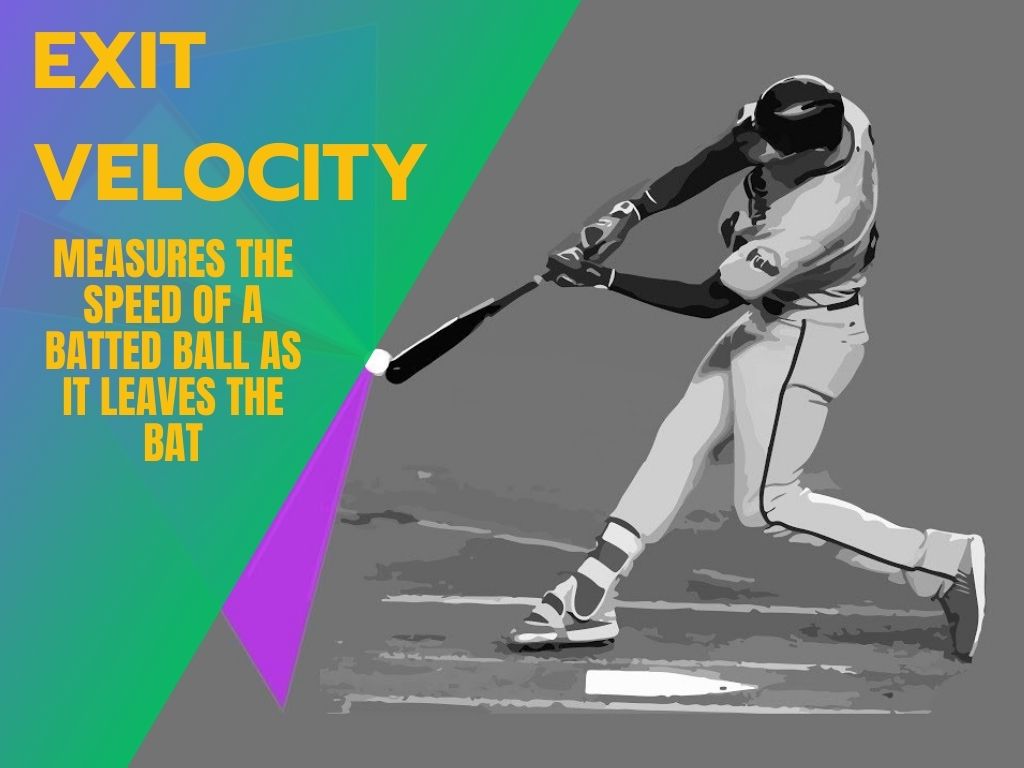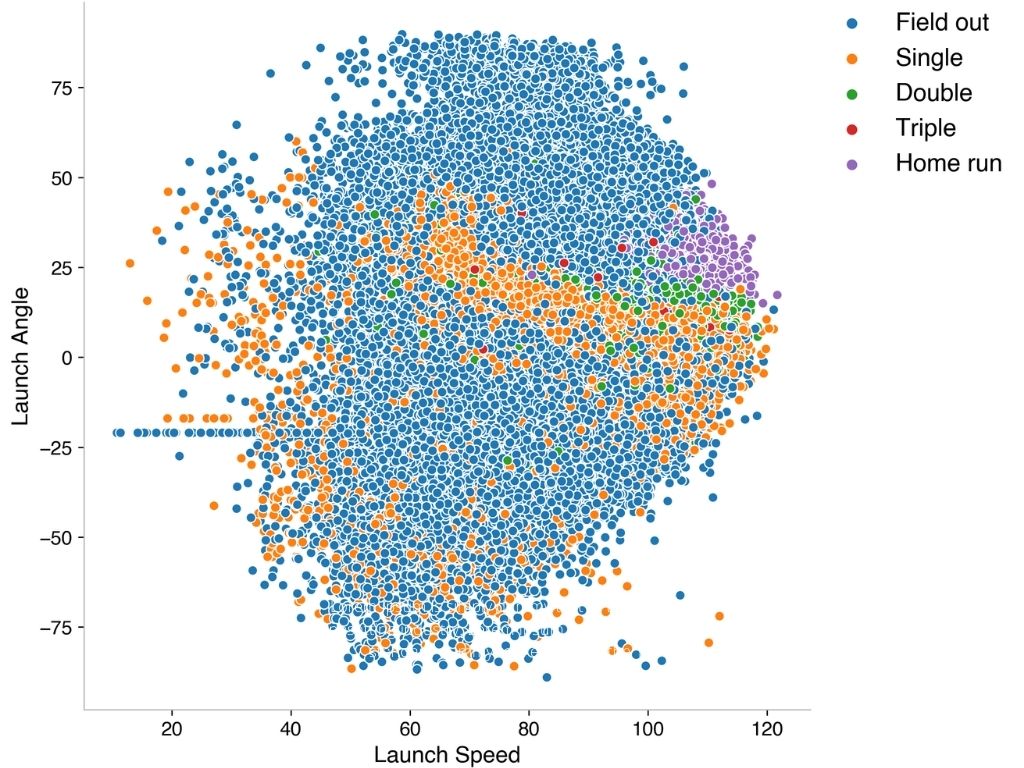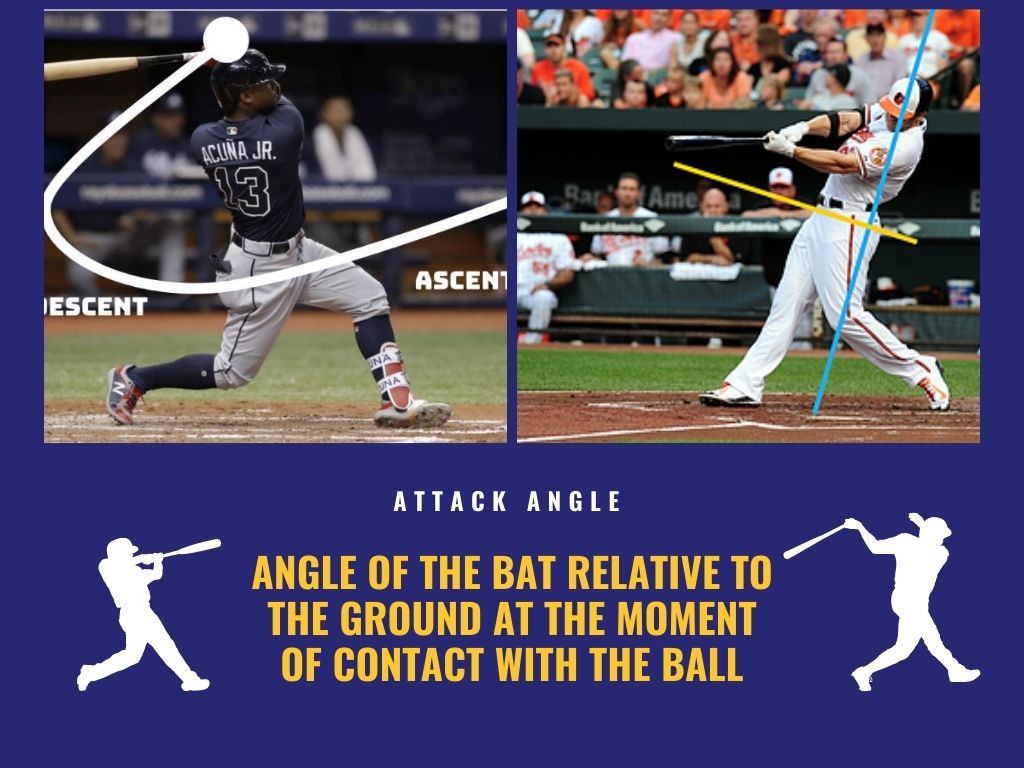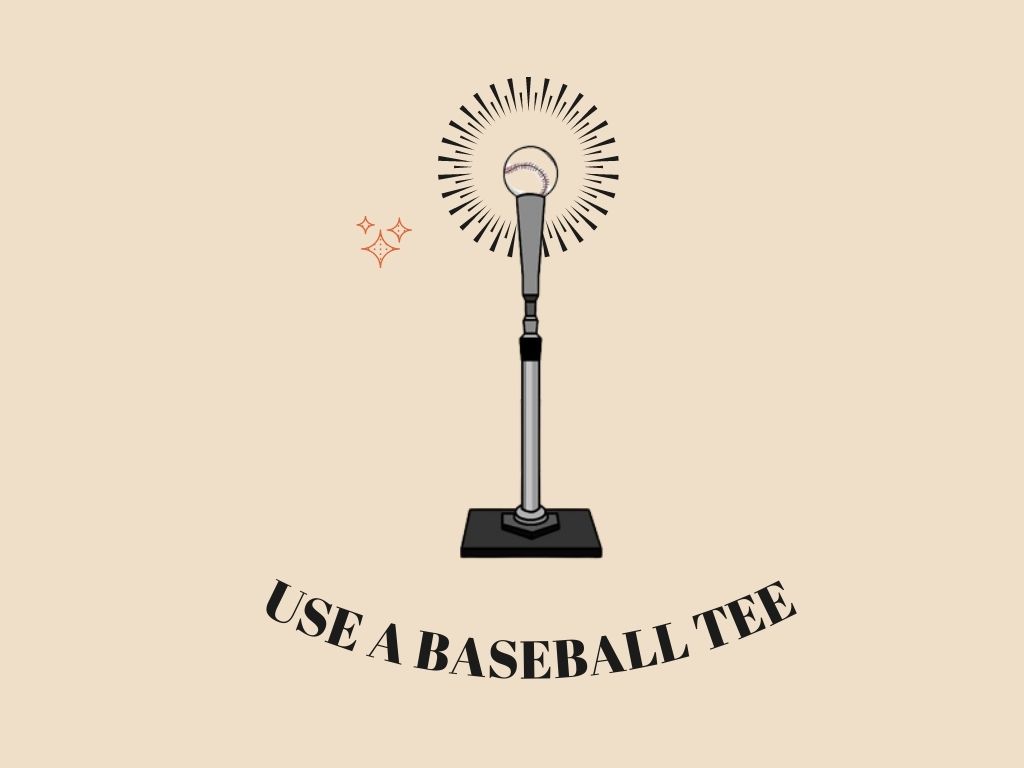Who doesn’t like home run videos? There’s something incredibly satisfying about seeing the ball go high up in the air and over the fence. But what is the science behind a perfect home run?
Launch angle is a crucial factor in determining the distance of a home run. Throughout its history, baseball has undergone numerous transformations in its hitting tactics.
The game of baseball has undergone a revolution in recent years, thanks to the advent of advanced statistics and data analytics. This has led to a renewed focus on the launch angle, which has become a critical factor in determining a player’s success on the field.
Welcome to the exciting world of baseball launch angle, where every inch can make a difference. Today, we’ll be taking a deep dive into this crucial aspect of the game.
What Is the Launch Angle?
Hitting is often thought to be the most critical baseball action. Over the year, players and coaches put much emphasis on hitting technique. Recently, hitting launch angle has placed itself in a category that’s hard to ignore.
The launch angle in baseball is the vertical angle at which the ball leaves the bat. It is measured in relation to the ground. A high launch angle means your hit the ball will go further and higher into the air, and likewise, a low launch angle means that the ball will go lower and not as far.

The MLB has classified launch angles for different types of contacts. Let’s take a look at them.
| Type of contact | Launch Angle |
| Ground ball | Less than 10 degrees |
| Line drive | 10-25 degrees |
| Fly ball | 25-50 degrees |
| Pop up | More than 50 degrees |
Why should you care about the launch angle? It can affect the distance you hit the ball, the height of a pop-up, and the speed at which the ball leaves your bat. It’s also an important element in the batting average and on-base percentage.
Although you can depend on the angles provided for now, remember that the exit velocity of your hit ball can make a great change.
Let me demonstrate this with a simple example.
If you hit a ball softly at a low angle, it will likely result in a ground ball. But if you smash it at a higher angle, it will be more likely to be a home run. So all you have to do is to find the sweet spot and make the most of every swing.
What Launch Angle is The Best
If you ask to tell an exact angle. I’d rather say it depends on several factors. Your hit ball depends on the exit velocity, pitch type, the direction of the hit, and, lastly, the field dimensions.
However, Statcast did an analysis in 2015. The analysis was pretty revolutionary. I must say! They have given some general guidelines.
According to Statcast, the best launch angle for a baseball is between 8-25 degrees and 12-17 degrees being the most common. They have tested every angle and found that the range of angles allows the ball to travel the most in the air while also providing the ball with the most power.
Figure 2- Optimal Launch Angle is Between 8-25 degrees
Let’s not forget the earth’s condition. Wind resistance, weather, and the type of ball being used can have a take on the launch angle. That’s why I said it depends.
Some experts have suggested that the optimal launch angle may vary based on the individual hitter’s abilities and strengths. I have seen very few players who can match the prowess of Joey Gallo.
With his impressive power, Gallo can make the most of his swings and send the ball soaring through the air. For hitters like him, a higher average launch angle can be a key factor in their success at the plate. (over 30 degrees).
But don’t worry if you don’t have that strength. Launch Angle is here to save you.
If your hitting power is not so good, then aim for closer to 15 degrees. Practice making your launch angle around 10 to 20 degrees. It will magically increase power numbers and batting average.
What is Exit Velocity
In the world of baseball, data reigns supreme. It’s evident that Major League Baseball is producing an immense amount of player data nowadays.
Since its implementation in 2015, the Statcast system has revolutionized the way coaches approach player preparation and development across all 30 Major League ballparks. The invaluable data provided by this system has already begun to shape the future of baseball.
I know most folks have heard of Exit Velocity. It’s rather common to read about it these days.
Exit velocity is a baseball statistic that measures the speed of a batted ball as it leaves the bat. It is measured in miles per hour (mph) in the U.S. It is considered to be one of the most important factors in determining the outcome of a batted ball.

A high exit velocity indicates that the batter has hit the ball hard, making it more likely to go for a hit or a home run. A low exit velocity indicates that the batter has hit the ball softly, making it more likely to be caught or turned into an out.
The exit velocity is measured using a radar gun. The gun calculates the speed of the ball based on the time it takes for the beam to travel to the ball and back.
Exit velocity is a relatively new statistic, and it was introduced in Major League Baseball (MLB) in 2015. Since its introduction, the players, coaches, and as well as fans are digging it.
This complex statistic also depends on several factors. However, the impact exit velocity has created among baseball enthusiasts is simply something you can’t ignore. It tells you the batter’s power, contact ability, and future performance. Great way to get your batting stats and work on them!
As I already said, the launch angle depends on exit velocity too. So, the ideal combination of exit velocity and launch angle is a high exit velocity with a launch angle between 8 and 32 degrees. This combination produces balls that travel high in the air and have a good chance of going for home runs.
Statcast data has introduced an interesting ‘thing’. You can set the launch angle and exit velocity in the graph, and it will tell you your chance of hitting a home run and other stats.
Let me tell you another interesting stuff. The ‘Spray Chart’.
It’s a visual representation of a hitter’s batting pattern. It shows the locations of the ball where the ball was hit in the field in a game. Interesting?
The chart gives you insights on singles, doubles, triples, and home runs.
Spray charts have become a staple tool for coaches and analysts alike in the world of baseball. By utilizing these charts, they are able to delve deeper into the game and gain a more comprehensive understanding of each play.
Here is a spray chart from baseballsavant for batted balls with 80 mph at 10-degree launch angles.

For example, a batted ball at 80 mph exit velocity and 10-degree launch angle has a batting average of .486 (wow!!),
- Singles: 73%
- Doubles: 11%
- Triples: 2%
- Home runs: 14%
Likewise, the percentage of singles, doubles, triples, and home runs that are hit with an exit velocity of 70 mph and a launch angle of 20 degrees:
- Singles: 57%
- Doubles: 22%
- Triples: 4%
- Home runs: 7%
What is Attack Angle
Attack angle is another baseball term that means the angle of the bat relative to the ground at the moment of contact with the ball.
To hit a firm line drive, the best strike angle is +5° to +15°, and to hit a home run, keep the attack angle between +20° to +35°.
Attack angles are of two types. A positive attack angle indicates that the bat is traveling up at the moment of contact, while a negative attack angle indicates that the bat is traveling down.
The attack angle can determine the outcome of the batted ball. Balls hit with a high attack angle (between 15 and 25 degrees) are more likely to be fly balls.
Fly balls are more likely to go for extra bases, while ground balls are more likely to be outs. In recent years, I have noticed a trend toward hitters trying to hit the ball with a higher attack angle.

After thorough analysis, I have found that hitters who hit the ball with a high attack angle are more likely to produce home runs and extra-base hits. However, it is essential to note that attack angle is not the only factor that affects the outcome of a batted ball.
A ball hit with a high attack angle and a high exit velocity is much more likely to go for a home run than a ball hit with a low attack angle and a low exit velocity.
The balls hit with a low attack angle (between -5 and 5 degrees) are more likely to be ground balls. They will likely get you single, doubles, and triples at max.
If you own a Zepp, Blast Motion, or Diamond Kinetics bat sensor, you’re in luck! These nifty gadgets allow you to measure your attack angle and easily perfect your swing.
For more device suggestions, you can read: Best Baseball Swing Analyzer Devices
Does The Launch Angle Have Any Limitations?
Yes, the launch angle does have some limitations. It can impact a hitter’s overall offensive production and effectiveness.
If you are too dependent on hitting at the perfect launch angle, you will experience more strikeouts. You will be more likely to swing and miss the ball.
Another drawback of the launch angle is its inflexibility, as hitters cannot simply change it without impacting other facets of their batting technique.
The launch angle is not permanent. It can change with the pitch direction, spin rate, wind speed, and direction.
While the launch angle is undoubtedly an important factor to consider, no guarantee simply adjusting the launch angle will lead to success.
Tips for Incorporating Launch Angle Into Your Batting Practice
If you’re looking to take your game to the next level, improving your launch angle is a must. I will tell you more!
Here are some of the things you can do-
Use a Baseball Tee
Try hitting balls from different angles and with varying degrees of force to help build your skill and technique. Using a tee will help you big time.
Try to aim for the optimal launch angle of 8-25 degrees, with the sweet spot of 12-17 degrees being the most common.
Make sure to pay attention to your swings, focusing on hitting the ball with the optimal launch angle. Find your problem and work on them.
Be sure to also track your progress by accurately measuring your exit velocity and launch angle using proper equipment. While power is certainly important, work on your precision and accuracy too.

Practice, Practice, and Practice.
Develop the muscle memory necessary to hit the ball with the correct launch angle Every Single Time.
Have I changed your mind yet? Need a new baseball tee? Here are the 11 Best Baseball Batting Tee to maximize your hit. Practice and see your hitting skill soar.
Work on Your Launch Position
Looking to improve your swing and hit more home runs? Look no further than The Hitting Vault’s “Launch Angle Baseball Drill.”
This tried-and-true technique involves strategically placing a tee behind you and swinging over it to create the perfect angle with your bat. Give it a try, and watch as your launch angle improves!
For those looking to enhance their swing, the “Barrel Turn Drill” from VPX Baseball is a must-try. This drill utilizes a resistance band to generate separation and torque, resulting in a more powerful and efficient swing.
While it may not be as flashy or impressive as some other bats you see on the diamond, it’s an essential tool for young players. But adults can practice hitting with it. Look no further than these top 10 Tee Ball bats that will take your launch angle to the next level.
Use Video Analysis
Sports with technology are always fun. And when it is about baseball, you cannot just ignore it.
Do you know using just a simple piece of equipment, you can achieve a great launch angle while hitting? Guess what’s that.
A Camera!
Taking a video of your practice session to analyze it later. You can easily identify when your problem is and how to fix it. And there is always room for improvement.

If you have any trouble finding the problem, show it to a coach or post it online. The internet folks are always ready to help you.
Get Feedback From a Coach
Coaches are always ready to help their students. If you think you are having a problem with your launch angle, then getting feedback from a coach might just be the thing you need.
With their guidance, you can develop a personalized plan to optimize your launch angle and start hitting those home runs like a pro. With the help of a coach or experienced player, you can identify and correct any mistakes you may be making.

Ever wondered why softball is so rarely played in contrast to baseball? One of the reasons is the cost. Softball is expensive, and I’m here to break down exactly why that is.
Have fun and enjoy the process
Be Patient. Don’t get frustrated if you don’t see immediate results or if you make some mistakes along the way. Have fun in the process. Embrace the thrill of the game, and it won’t bore you.
Remember that launch angle is not the only factor determining your success as a hitter. It takes time to develop muscle memory and the technique necessary to consistently hit the ball with the correct launch angle.
Keep practicing, stay focused, and stay determined and you will eventually see results. Launch angle is just one tool that can help you become a better hitter.
Frequently Asked Questions
1. What Is the Difference Between the Launch Angle and Exit Angle?
The launch angle refers to the angle at which the bat strikes the ball, while the exit angle is the angle at which the ball travels through the air after being hit. These metrics are measured in degrees, with a line drive registering at 0 degrees and a vertical line drive at 90 degrees.
2. How Does the Speed of the Pitch Affect the Launch Angle?
The launch angle can vary depending on the pitch’s pace because quicker throws force hitters to alter their strokes. As the hitter has less time to respond and change their stroke, a quicker ball is harder to hit with a high launch angle. Since the hitter has more time to respond and alter their stroke, a slowed ball is simpler to hit with a high launch angle.
3. Can a Batter Change Its Launch Angle Mid-Swing?
It’s true that hitters can alter their launch trajectory mid-stroke by changing the elevation of their bat and their swing route. However, most hitters are unable to execute this reliably due to how challenging it is to do so.
4. What Is Considered a Good Launch Angle for Hitting Doubles?
Launch angle is crucial to hitting doubles. Experts suggest that the ideal launch angle for hitting doubles is within 10 to 25 degrees.
5. Is It Possible to Have Too High of a Launch Angle?
Yes, you can have extremely high launch angles. But the drawback is, it can lead to a weak pop-up or a fly ball that the outfielders easily catch.
6. How Can You Calculate Your Launch Angle Without Advanced Technology?
You can determine your launch angle by observing the ball’s trajectory after you strike it and contrasting it with your swing’s trajectory.
7. Are There Any Drills That Can Help Improve Your Launch Angle?
Yes, you can work on your launch angle. There are a lot of drills available for improving your launch angle. Using a tee or a pitching machine and training with a weighted bat can certainly improve your launch angle.
8. What Is the Perfect Launch Angle for Hitting a Home Run?
Generally, a launch angle between 25 and 35 degrees is ideal for hitting a home run. But it can depend on batters’ skillset, experience, and power.
9. Does a Player’s Height Affect Their Ideal Launch Angle?
The ideal launch angle of a person can vary depending on their height. Taller players can strike the ball with a greater launch angle because they have a higher launching point. Shorter players must move higher in order to hit the ball with a high launch trajectory because they have a shorter launching point.
10. Is There a Correlation Between a Batter’s Attack Angle and Their Launch Angle?
Yes, there is a connection between a batter’s attack angle and its launch angle. When the attack angle is greater, the launch angle may also be greater, and when it is smaller, the launch angle may be smaller.
11. How Does a Change in a Player’s Bat Affect Their Launch Angle?
A player’s launch angle can vary depending on the bat they are using. A lightweight bat will usually generate a greater launch angle than a heavier bat and vice versa. Generally speaking, a longer bat will also result in a lower launch angle, whereas a shorter bat will usually result in a greater launch angle.
12. Can a Player’s Launch Angle Vary Based on the Type of Pitch They’re Facing?
Yes, a player’s launch angle can change depending on the sort of ball they are playing. Fastballs usually move faster than breaking pitches, which explains why. Because of this, it is simpler for batters to get under the ball and smash it high.
13. Is There a Correlation Between a Player’s Launch Angle and Their Batting Average?
Yes, there is a connection between a player’s launch angle and hitting average. A player’s total batting average can increase if they hit the ball with the proper launch angle, which increases their chances of getting extra-base hits.
14. What Is Mike Trout’s Average Launch Angle?
The average launch angle for Mike Trout’s career is 12.8 degrees. This is just a little bit higher than the league’s 11.7-degree average.
15. How Do Weather Conditions, Such as Wind, Affect Launch Angle in Baseball?
Baseball launch angles can be impacted by weather factors like the wind because they can change the ball’s trajectory after it is hit. For instance, a strong headwind can make the ball fall faster and lower the launch angle.
Final Words
Though the launch angle is relatively new, it has been gaining popularity ever since. It directly relates to a hitter’s ability to hit for power and produce extra-base hits.
While a launch angle of around 25-30 degrees is generally considered optimal, it simply is not always the case. You need to consider the situation and the pitcher you are facing.
To increase launch angle, you can focus on developing their power and explosiveness, experimenting with different angles during batting practice, and incorporating situational hitting into their game plan.
Keep practicing, read the environment and make your launch angle. Give your all at the plate and make a mark on the game. Don’t just depend on launch angle; try to perfect every aspect of your hitting game. Do not settle for anything but the best.
Meta Description
You May Also Like
What Does OPS Mean in Baseball? In-Depth Analysis
A Detailed Guide on Infield Fly Rule| The Rule You Must Learn Well to Understand
How to Field a Ground Ball? | Learn With Coach Jason

Hello everyone. My name is Jason Butler, and I live in California, America. I was a professional AAA Minor League Baseball player. I lost my chance of playing MLB for injury issues, but I did not lose my love for baseball. I attended the coaching training program and am now working as a coach in a small school in San Diego.
I always love to share my experience and knowledge if that can help you. Play baseball, and stay fit.
